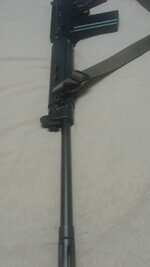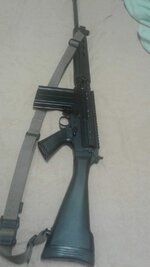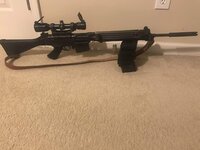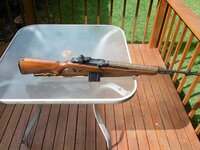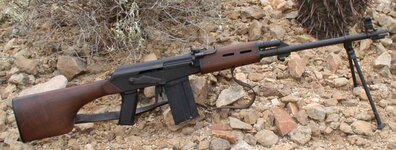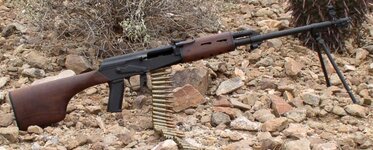- Thread Starter
- #21
As I recall, the targets on army ranges where I qualified were not bull's eyes. They were electrically actuated flip down targets. Meaning, when the target panel was hit - anywhere - it flipped down, then reset. When the target dropped, you got credited with a hit. If you hit the dirt/gravel in from of this target and that material in turn hit the target, it would still go down whether the bullet hit or not, scored as a hit regardless. This may be a classic example of, "Close enough for government work."
I'm right handed, I still can't like the left side charging handle. Maybe it's because of my personal experience. Yes, the FAL, G3, even the MP44 have charging on the left. I guess you're supposed to hold the pistol grip with your right hand and charge with the left. Which you cannot effectively do with, say, the M14. But wait a minute, the highly regarded AK47 has the charging handle on the right side, too. So there you go. The Remington 740 and the Winchester 100 both charge on the right side, due to lack of pistol grip for holding; the presence of absence of a pistol grip being the defining criterion? But wait a minute, the G43 had the handle on the left and lacked a pistol grip. Or go in reverse again, and the G41W had one sort of biased to the right.
I'm right handed, I still can't like the left side charging handle. Maybe it's because of my personal experience. Yes, the FAL, G3, even the MP44 have charging on the left. I guess you're supposed to hold the pistol grip with your right hand and charge with the left. Which you cannot effectively do with, say, the M14. But wait a minute, the highly regarded AK47 has the charging handle on the right side, too. So there you go. The Remington 740 and the Winchester 100 both charge on the right side, due to lack of pistol grip for holding; the presence of absence of a pistol grip being the defining criterion? But wait a minute, the G43 had the handle on the left and lacked a pistol grip. Or go in reverse again, and the G41W had one sort of biased to the right.






